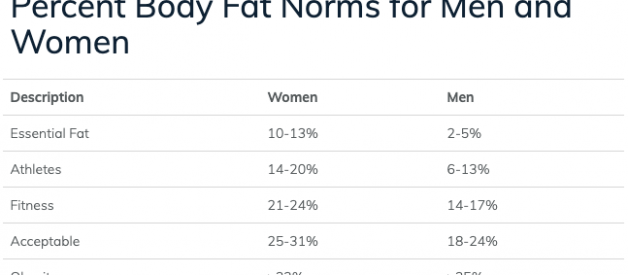What is body fat percentage?
Simply put, the percentage of your body weight that?s fat.
If you?re a 75 kg person with 11 kgs of fat, your body fat percentage is 14.6%(11/75*100)
Body fat percentage changes when you gain or lose fat or muscle.
For example, if, with a proper resistance training program and diet, your body weight went down from 75 kg to 72kg, and you lost 3 kg of fat(assuming, for illustrative purposes that all the loss was exclusively from fat), your new body fat percentage would be 11%((11-3)/72 * 100)
If, on the other hand, you did not follow a proper resistance training program and diet, and lost 3 kg of muscle, but no fat, your body fat percentage would be 15.3%(11/72*100).
This is also why scale weight is never truly representative of body composition changes and can be used, at the most, as one of the markers to assess progress.
What is the difference between BMI and body fat?
BMI, or Body Mass Index, is calculated as weight in kg divided by height in meters squared.
My current body weight is 67.5 kgs and I?m 173 cm tall.
My BMI, thus, is = 67.5/(1.73*1.73) = 22.6, which puts me at close to ?Overweight? as per the table below(Revised BMI Ranges for Asian Populations).
However, my current body fat percentage is between 9?10%, which means I carry much more muscle than someone who?s 67.5 kgs/173 cm and at 18% bodyfat , even though our BMIs would be the same and the ?Overweight? status would be more applicable to the latter person.
 Revised BMI ranges for Asian Populations
Revised BMI ranges for Asian Populations
BMI, should ideally capture levels of adiposity. BMI cutoffs could be used to define obesity, across ethnic groups, if muscle, bone mass and water, stayed constant and only body fat varied. However, that is rarely the case and BMI will change with any perturbations to the above variables.
Professional bodybuilders can be classified ?Obese?, if one were to go by their BMI values alone, while they could very well be below 8% body fat and holding on to a considerable amount of muscle mass.
Conversely, if someone were to lose muscle mass and gain a proportionate amount of body fat(sarcopenic obesity or ?skinny fat?), BMI wouldn?t change much. Even if the individual were to be considered non-obese, the excess body fat could put the individual at risk for metabolic and cardiovascular complications.
Can body fat percentage be determined from BMI?
Body fat percentage doesn?t correlate well with BMI, especially for lean individuals who resistance train.
However, in overweight individuals, who don?t lift weights, BMI is often similar to body fat percentage.
The Duerenberg et al(1991) formula can be used to calculate body fat percentage for the above individuals (something I learnt from the awesome Henselmans PT Course)
BF% = 1.20 x BMI + 0.23 x age ? 10.8 x sex ? 5.4sex = 0 for women; 1 for men
The formula supports the assumption that, for an equivalent level of leanness, women carry 10.8% more fat than men, at any body fat percentage. Thus a man who?s 12% body fat, will look as lean as a woman who is 22.8% body fat.
What are healthy body fat ranges for men and women?
The American Council on Exercise (ACE) gives the following chart for body fat ranges for men and women:

For healthy body fat percentage ranges based on age and sex, Beth Israel Lahey Health Winchester Hospital gives the following breakup :

In my personal opinion, the more you tend towards maintaining the lower end of the ranges(12?18% for men and 23?28% for women), the healthier you are long term(the more body fat you carry, the higher the levels of chronic inflammation and the poorer your insulin sensitivity). You also have slightly more leeway for fat gain during vacations, festivals, family occasions etc(from the extra high calorie foods).
What do different body fat ranges look like in men and women?

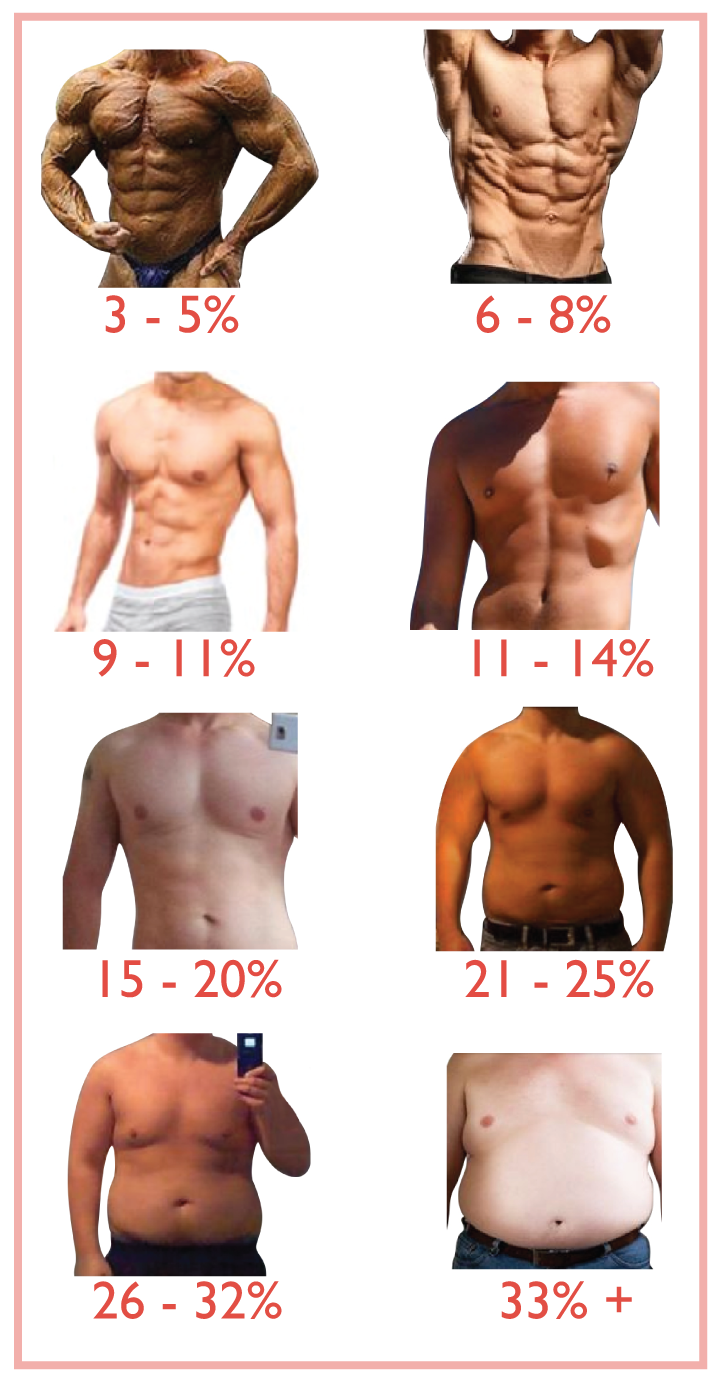 Pic Credit : bodylogiq.org
Pic Credit : bodylogiq.org
Credit for below descriptions of body fat percentage ranges ? www.ketogains.com
MALE BODY FAT PERCENTAGE: 3% ? 4%
In this range you will find competing bodybuilders and the emaciated. When prepping for contests you can find body builders in this range temporarily. Nearly all external veins may be visible on each muscle, very distinct separation, and visible striations in nearly all muscle groups including the glutes, the last bastion of body fat. At barely more than required to protect your organs to function (roughly 2%), you?ll have almost no subcutaneous fat and only some visceral left.
MALE BODY FAT PERCENTAGE: 5% ? 9%
This body fat percentage is not sustainable for most men. Around this level, all of your muscles will show noticeable definition and clear vascularity in most muscles. There will be a pretty clear distinction between each muscle. Even the abs will show vascularity at the lower end of this spectrum.
MALE BODY FAT PERCENTAGE: 10% ? 14%
This is the range that most men want to be at for a classical ?beach body? look. There will be separation between muscles, but not in every muscle. Veins will mostly only show on the arms, and sometimes the legs with some striations visible in forearms or possibly shoulders, Lower abs may sometimes still be hidden by a little pouch of fat.
MALE BODY FAT PERCENTAGE: 15% ? 19%
This is more of a lean look, with less muscle striations and vascularity. The definition on muscles goes down and there is not a clear separation between them. Most vascularity is gone, but some can still be seen on the arms. Most athletes fall into this category or lower and can be maintained by most people with relative ease.
MALE BODY FAT PERCENTAGE: 20% ? 24%
This is the most common range for ?young adult? men to be in, where the separation between muscles begins to become nonexistent. There are almost no striations or vascularity in any muscle groups. Typically there will be a little bit of fat on the stomach, but it will not be rounded. A male of 5?10? ? 6′ who weighs 82?84 kgs will probably be at 20 to 22% BF.
MALE BODY FAT PERCENTAGE: 25% ? 29%
Any range above this is considered obese in most men. The waist size starts to increase and the stomach shows visible rounding. There may still be little neck fat, but most men gain weight in their stomachs first. There?s no separation of muscles and veins typically don?t show. A male of 5?10? will probably have a waist size of over +35 inches.
MALE BODY FAT PERCENTAGE: 30% ? 34%
The fat starts to distribute around the body and the waist will look larger relative to the hips. The stomach will be noticeably more round and chin fat will start to form. There is no visible muscle separation.
MALE BODY FAT PERCENTAGE: 35% ? 39%
The stomach will start to gain more and more fat around it, and waist size usually is over +40 inches. The stomach will have clear protrusion and hang (the classic beer gut).
MALE BODY FAT PERCENTAGE: 40% and more
Everyday activities begin to be very difficult to perform, and this is where the body fat level is approaching morbidly obese. The stomach will continue to grow and the chest will gain more fat as well as more fat accumulation on the limbs. Waist size will likely approach +45 inches for a 5?10? man.
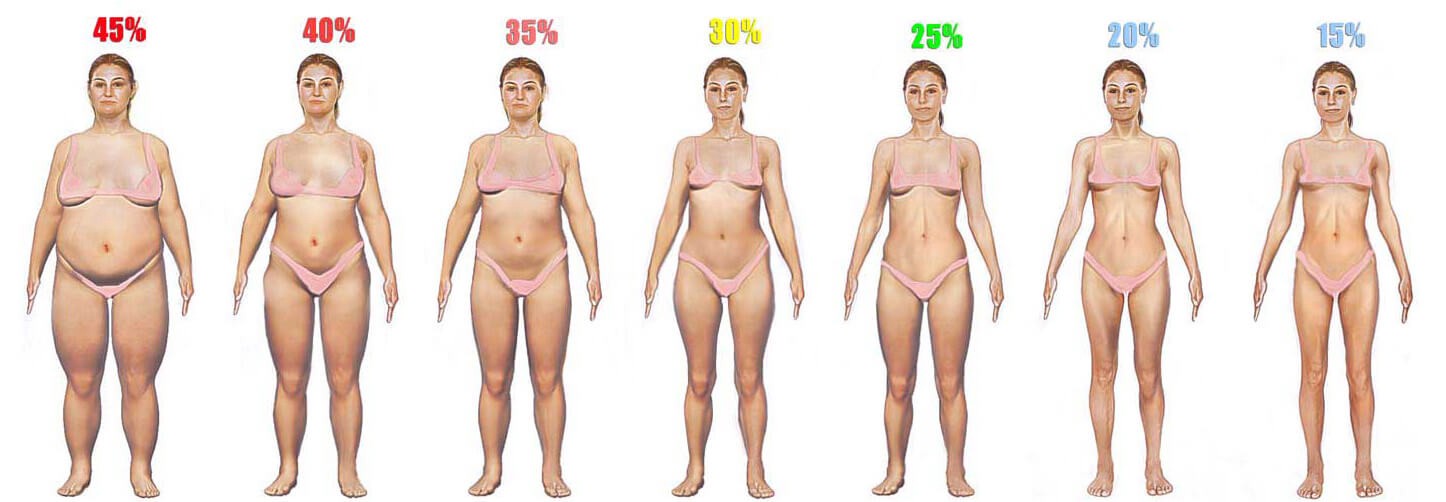
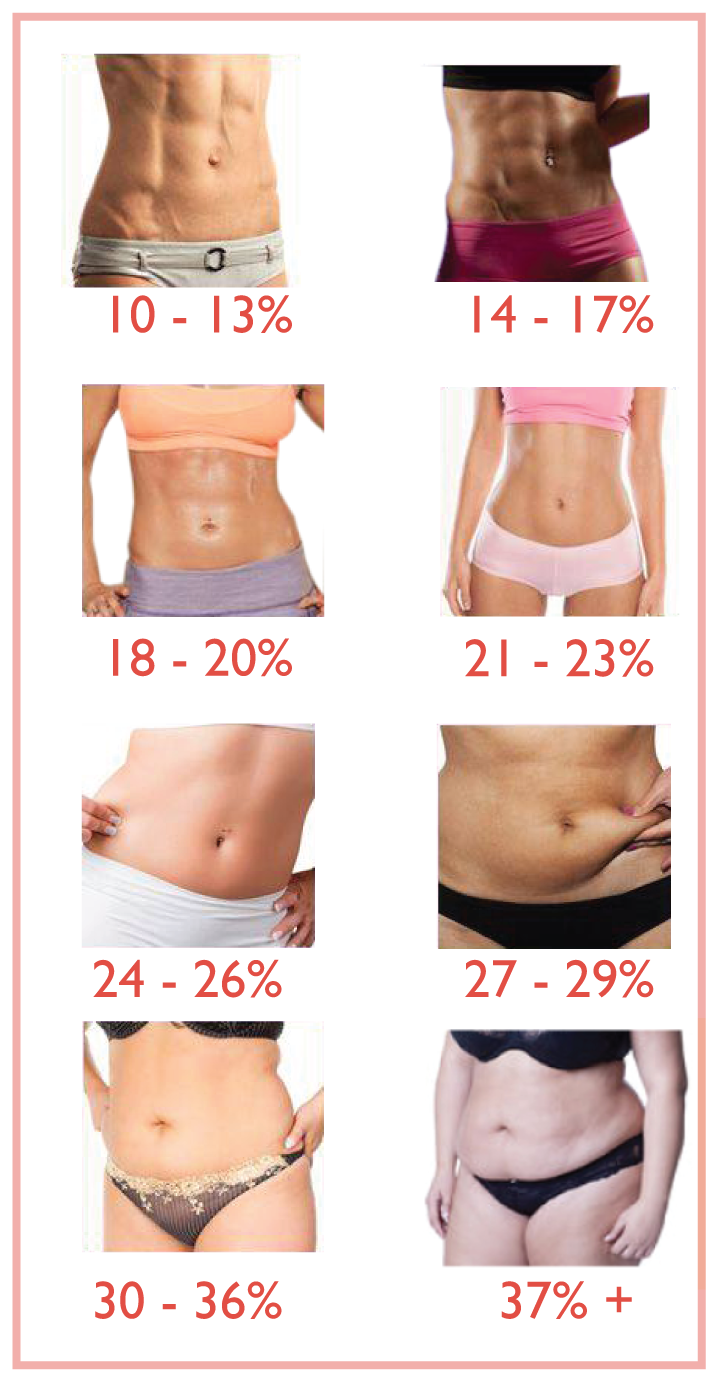 Pic Credit : bodylogiq.org
Pic Credit : bodylogiq.org
Credit for below descriptions of body fat percentage ranges ? www.ketogains.com
FEMALE BODY FAT PERCENTAGE: 10% ? 14%
Women have more fat in breast tissue, waist, thighs and surrounding the organs. The essential body fat for a woman is 8%, while for a man is only 2%. This is the range you will usually see bodybuilders in, and is not considered healthy long term. Muscles are clearly defined and separated, and vascularity is noticeable all over the body. The less vascularity, the further away from 10% body fat you deviate.
FEMALE BODY FAT PERCENTAGE: 15% ? 19%
The hips, thighs, and butt usually have less shape because of the lack of body fat. Many bikini, fitness models, and some athletes are usually within this range. Vascularity is usually only in the arms and some in the legs, and there is still separation between muscles, with clear definition. Still considered low for women it may not be very sustainable in the long run.
FEMALE BODY FAT PERCENTAGE: 20% ? 24%
The separation between muscles, as well as the definition in the muscles becomes less apparent in the limbs while abs should still retain some definition. This is the range that most female athletes fall in, and is considered as highly fit and more sustainable.
FEMALE BODY FAT PERCENTAGE: 25% ? 29%
This is the range that most women fall into, as it is not too slim or overweight while being maintainable. Curves begin to form in the hips as there is more body fat around the thighs and butt. A 5?4? ? 5?6? woman of 59?62 kgs will probably be at 25 to 27% Body Fat.
FEMALE BODY FAT PERCENTAGE: 30% ? 34%
As women begin to gain weight, instead of it going to their stomach, it will begin to show around the hips, thighs, and butt. In this range, the butt and thighs will likely be more rounded and pronounced.
FEMALE BODY FAT PERCENTAGE: 35% ? 39%
At this level of body fat, the face and neck will begin to gain some more visible fat. The stomach may also start to gain fat and be protruding a little. Usually the waist is over +32 inches and hips over +40 in this range.
FEMALE BODY FAT PERCENTAGE: 40% ? 44%
The thighs and hips will continue to have fat funneled into them, and grow very large. Visible hang of the stomach at this point. At this level of body fat, the waist is typically over +35 inches, hips over +42 inches, and thighs over +25 inches.
FEMALE BODY FAT PERCENTAGE: 45% ? 49%
The waist can be over +37 inches while hip circumference may reach +45 inches and become more noticeably wider than the shoulders. Typically, the skin will begin to lose its smoothness and often show dimpling on it.
FEMALE BODY FAT PERCENTAGE: 50% AND MORE
Due to the fat cell structure in women much of the skin will show visible cellulite dimpling. Both waist and hips will be wider than the shoulders. Waist will probably measure over +40 inches, hips +45 inches and thighs over +30 inches, for a 5?4? woman who weighs over 90 kgs
Does everybody look the same at the same body fat percentages ?
2 people at the same body fat percentage can look completely different based on the amount of lean body mass(muscle) that they have, as illustrated in the below 2 pictures.
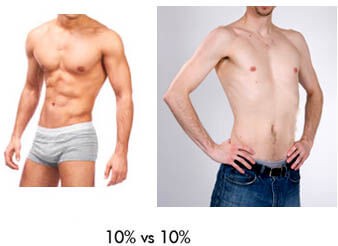 Pic Copyright : Leigh Peele
Pic Copyright : Leigh Peele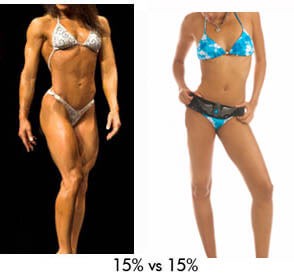 Pic copyright : Leigh Peele
Pic copyright : Leigh Peele
Also, carbohydrate and water manipulation and other advanced super compensation techniques used by physique athletes/bodybuilders can have a dramatic visual effect on body composition.
How to calculate body fat percentage?
The one truly accurate method is via carcass analysis, where you die and get stripped of all body fat and it is weighed. Assuming that that?s not a choice, let?s look at a few other ways :
The 2 compartment models
Most methods used to estimate body fat use the 2 compartment model. This means that the body is divided into 2 components, fat mass and fat-free mass. Fat-free mass includes organ, muscle, bone and body water, anything that isn?t fat.
Densitometry
This is the measurements of total body density through determination of body volume by underwater weighing, helium displacement or a combination of water displacement by the body and air displacement by the head. These measurements can be used to determine body density, which in turn allows physicists to calculate the percentage of body fat and fat-free mass. Thereare 2 densitometry techniques.
Underwater or Hydrostatic Weighing
Hydrostatic weighing, also known as Hydrodensitometry or underwater weighing, is a classic measure of body composition, long held as a gold standard. The test involves the subject being lowered into a water tank until all body parts are emerged, expelling all the air from the lungs, then weighed.
 Underwater Weighing
Underwater Weighing
The equipment required to do underwater weighing is expensive. The tanks are mostly located at university or other research institutions, and there is generally not easy access for the general population.
Bod Pod(Air Displacement Plethysmography)
Air-Displacement Plethysmography is a method for assessing body fat and lean mass, commonly using the BodPod machine. The method is similar underwater (hydrostatic) weighing, but uses air instead of water.
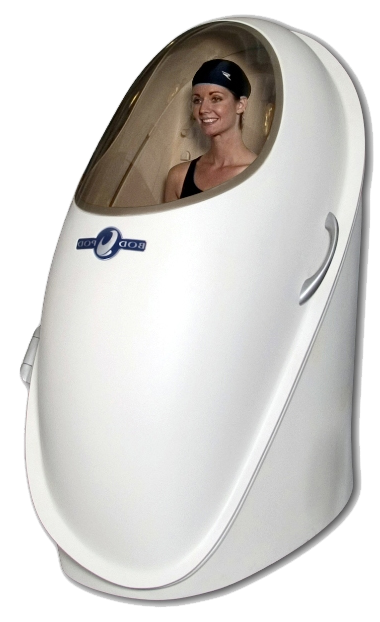 BOD POD
BOD POD
The BodPod unit is very expensive ($30,000 ? $40,000) and only a few facilities have it.
BIA(Bioelectrical Impedance Analyzer)
Scales that give you body fat percentage, use this technology. A current is sent through your feet/hands or both, and the impedance is measured. Organs, blood and muscles have a lot of water and electrolytes and the low impedance is used to calculate fat-free mass. Adipose(fat) tissue has very poor electrical conductivity. An estimation of body fat percentage is given using these readings.
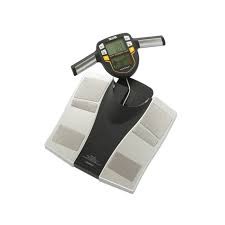 Tanita BIA scale
Tanita BIA scale
BIA scales are prone to error depending on your hydration status. If you are dehydrated or bloated, the scale will give you a different body fat percentage.
Measurements are best taken fasted in the morning, after using the bathroom.
BIA scales are not very expensive and are widely available.
The 3 compartment model
With a 3 compartment model, the body is divided in to 3 components, fat, bone mineral and all other fat-free mass that doesn?t include bone. Unlike the 2 compartment models, it is not influenced by variations in bone density across ethnicities.
Dual Energy X-Ray Absorptiometry
DEXA, was initially used to determine bone mineral density, but is now also used to estimate body composition.
X-ray technology is used to estimate lean tissue, bone, mineral, and fat across regions of the body with amazing accuracy. A DEXA scan will give you a precise body composition report, breaking down muscle and fat per body segment.
DEXA scans are also affected by hydration status and can be slightly expensive and time consuming.
 Pic Credit : Renue Health
Pic Credit : Renue Health
The 4 compartment model
Now that we?ve established that dying and getting dissected is not an option, a 4 compartment model is the most accurate estimation of body fat that currently exists. This model divides the body into mineral, water, fat and protein.
It involves measuring body density via Hydrostatic weighing or Bod Pod, bone mineral density via DEXA and total body water using deuterium deletion. The data is then plugged into equations and a fairly accurate estimation of body fat is derived.
A 4 compartment model is very expensive and used mostly in research studies.
How to track and measure changes in body composition
The easiest way to track changes in body composition is by using
– a weighing scale
– a measuring tape
– a pair of skinfold calipers
– a mirror
Weigh yourself everyday and calculate a weekly average
Daily scale weight fluctuations can be caused by water retention, glycogen and bowel movements. So don?t lay too much emphasis on daily weight measurements.
A weekly average gives you a better picture of what?s happening. If your weekly average is going down, you?re losing , if it?s going up, you?re gaining.

Weigh yourself first thing in the morning everyday, after you use the bathroom, in your undergarments, before drinking or eating anything
Log the daily measurements and calculate the weekly average
Keeping an eye on the averages prevents needless frustration with daily weight fluctuations
Take weekly measurements
Measuring tape is cheap and readily available. Use a tape(as shown below) that has a button to standardise the tightness. This kind of tape is accurate to track circumference measurements over time.
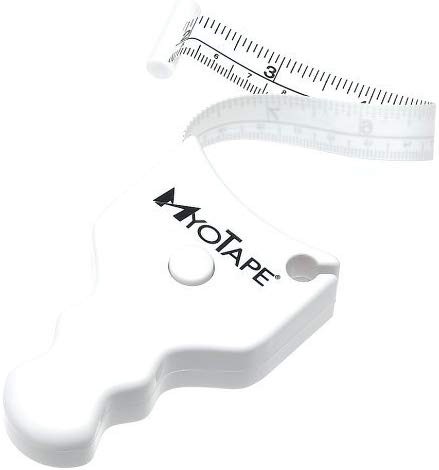 Myotape
Myotape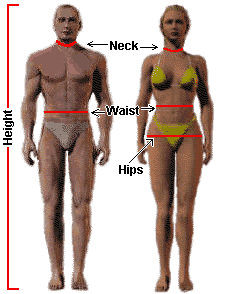 Measuring Sites for Men and Women
Measuring Sites for Men and Women
Take circumference measurements as shown in the infographic, before eating/drinking anything and after having used the bathroom, once per week, noting the measurements to the nearest 0.1 cm. For the waist measurement, maximally flex your abs and exhale all air from your abdomen, while you align the tape with a consistent tightness.For the sake of convenience, do it every Sunday.
Plug the data into this calculator and get an estimate of your body fat percentage.
Take weekly skinfold measurements
Plugging skinfold data into a predictive equation can grossly underestimate your body fat percentage. However, skinfold measurements are useful in tracking body composition changes.
If you see measurements going down, you?re losing fat, if you see them going up, you?re gaining fat.
Use these calipers to take weekly measurements. For the sake of convenience, do it every Sunday.
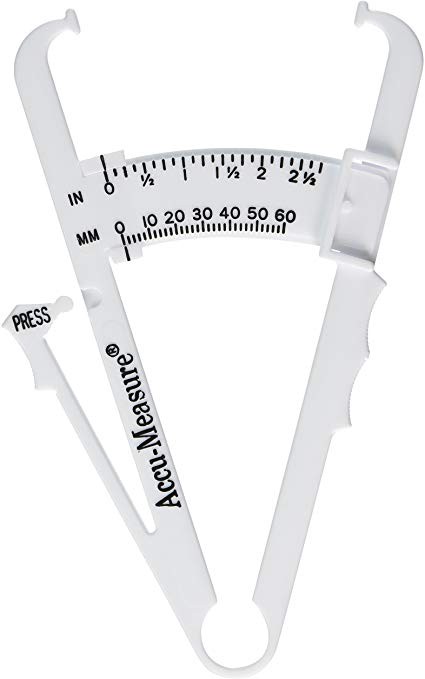 Accu-measure Body Fat Caliper
Accu-measure Body Fat Caliper
Measurement instructions
Always measure the exact same sites. Use birthmarks, moles or other markers to help identify where you pinch your skin every time. This will help with consistency in your measurements.
Always try to pinch the same amount of skin. Keep the thumb and forefinger about an inch apart and then pinch.
Place the caliper 1?2 cm away from the thumb and forefinger
? perpendicular to the skin fold
? halfway between the crest and the base of the fold
Measure each skinfold 5 times and note down all 5 readings and take an average
Don?t use an equation to plug in skinfold values. As long as the values are going down over time, you?re losing fat.
Measuring sites for men
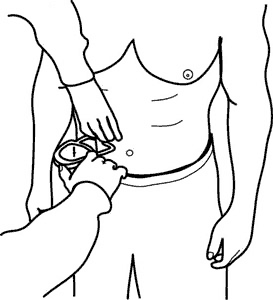 Umbilical/Abdomen
Umbilical/Abdomen
Umbilical/Abdominal
Grab a vertical skinfold about an inch to the right of your belly button.
 Suprailiac
Suprailiac
Suprailiac
Grab a skinfold above and parallel to your right iliac crest, the ridge of your right hip. Theskinfold will be roughly diagonal.
Measuring sites for women
 Umbilical/Abdomen
Umbilical/Abdomen
Umbilical/Abdominal
Grab a vertical skinfold about an inch to the right of your belly button.
 Suprailiac
Suprailiac
Suprailiac
Grab a skinfold above and parallel to your right iliac crest, the ridge of your right hip. Theskinfold will be roughly diagonal.
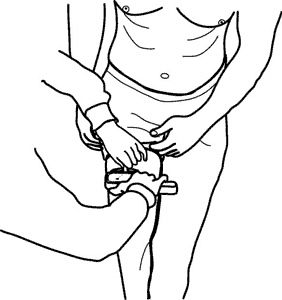 Thigh
Thigh
Thigh
While standing on your left leg, grab a vertical skinfold in the middle of your right thigh. Ifyou cannot find any spots to use as reference points, use the length of your hand as a reference for how far up the leg you take the skinfold.
Take weekly progress pictures
Visual changes, spread across weeks, are easier to see and stay motivated, irrespective of scale weight changing/not changing.
Take front, back and side pictures on the same day, at the same time, in the same lighting, to maintain consistency, spaced one week apart. For the sake of convenience, do it every Sunday.
The Bottomline
Getting an accurate representation of body fat percentage is pretty much impossible unless you?re dead.
Getting a rough estimate of your body fat percentage will help as a marker of overall health, better than BMI.
It is possible to track changes in body composition quite accurately using a weighing scale, measuring tape, skinfold calipers and pictures.
